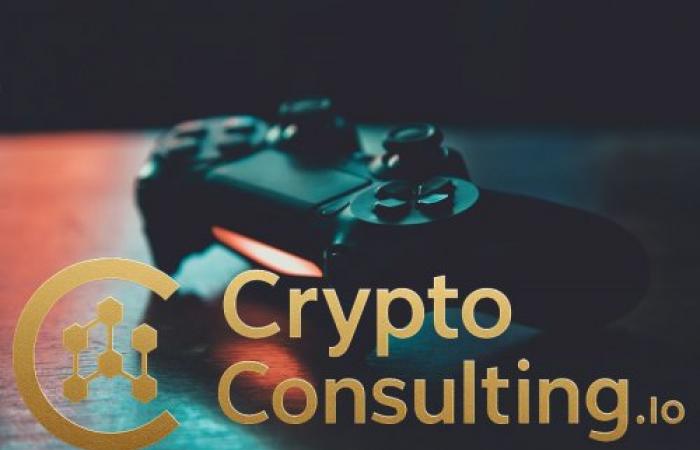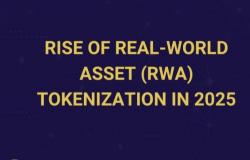
The blockchain gaming industry has achieved a transformative milestone in 2025, with play-to-earn economies generating over $12 billion in value and millions of active players worldwide participating in what has become a legitimate alternative to traditional gaming. Web3 gaming has evolved from speculative experiments to sustainable entertainment experiences that combine engaging gameplay with genuine economic opportunities. This revolution represents the convergence of gaming, blockchain technology, decentralized finance, and digital ownership, creating entirely new paradigms for how players interact with virtual worlds and extract value from their time and skills.
The $12 billion figure encompasses direct earnings by players through gameplay rewards, NFT asset sales, tournament prizes, and scholarship arrangements where players share earnings with asset owners. This substantial economy demonstrates that blockchain gaming has progressed beyond ponzinomics and unsustainable token emission models to create genuine value through entertainment services, competitive gaming, and digital asset markets. Major gaming studios, venture capital firms, and technology companies have invested billions in blockchain gaming infrastructure, validating the sector's long-term potential.
Evolution of Play-to-Earn Economics

Early play-to-earn models, exemplified by Axie Infinity's explosive growth in 2021, relied heavily on new player inflows to fund existing player earnings. These Ponzi-like dynamics created unsustainable economies that collapsed when growth slowed, devastating players who had invested savings into gaming assets. The sector learned harsh lessons about the necessity of sustainable value creation rather than pure redistribution of new participant funds.
Modern play-to-earn models in 2025 have evolved substantially to address sustainability concerns. Successful games generate revenue through multiple streams: cosmetic NFT sales, battle passes, tournament entry fees, advertising, sponsorships, and partnerships. These revenue sources fund player rewards rather than relying exclusively on new player investment. The shift from extraction-based to revenue-based reward models has created sustainable economies that can operate indefinitely without requiring exponential user growth.
Token emission schedules have become more sophisticated and conservative. Rather than distributing large quantities of governance tokens that inevitably crash in value, games now implement controlled emission tied to genuine achievements and skill demonstration. Rewards are often distributed in stablecoins or established cryptocurrencies rather than game-specific tokens with no external demand. This approach preserves reward value while reducing inflationary pressure on game tokens.
Skill-based reward distribution has replaced time-based grinding as the primary earnings mechanism. Early play-to-earn games rewarded players simply for logging in and performing repetitive tasks, creating tedious experiences that felt more like work than entertainment. Modern blockchain games reward competitive achievement, tournament performance, and rare accomplishment, ensuring that the most skilled and dedicated players earn the most while maintaining entertainment value. This shift has dramatically improved game quality and player retention.
Scholarship programs have matured into sophisticated arrangements where asset owners lend NFT gaming assets to players in exchange for revenue sharing. These programs provide access to blockchain gaming for players who cannot afford entry costs while creating passive income opportunities for asset owners. Major scholarship platforms like Yield Guild Games manage thousands of scholars across multiple games, providing training, community support, and optimized earning strategies. The professionalization of scholarship management has created a new category of blockchain gaming entrepreneur.
Major Blockchain Gaming Platforms and Titles
Several blockchain games have achieved mainstream success with millions of active players and sustainable economies. Axie Infinity, despite its earlier challenges, has reinvented itself with Axie Infinity: Origins, which dramatically reduced entry costs, improved gameplay, and implemented sustainable tokenomics. The game now attracts over 2 million daily active users and has paid out over $4 billion in lifetime player earnings. The Axie ecosystem includes breeding mechanics, land gameplay, tournaments, and extensive social features that create a comprehensive gaming experience.
The Sandbox and Decentraland represent metaverse platforms where users create, own, and monetize virtual experiences. These platforms have evolved beyond simple virtual real estate speculation to become venues for concerts, exhibitions, brand activations, and social experiences. Major brands including Adidas, Gucci, and Warner Music Group have established presences in these metaverses, creating unique experiences and selling limited-edition digital goods. Monthly active users across major metaverse platforms exceed 5 million, with virtual land parcels trading for substantial values in secondary markets.
Gods Unchained and Splinterlands represent successful trading card games built on blockchain. These games enable true ownership of cards as NFTs that can be traded, sold, or used across multiple game modes. The gameplay rivals traditional digital card games while providing economic dimensions impossible in centralized games. Top players earn thousands of dollars monthly through tournament prizes and card trading, while casual players enjoy free-to-play experiences with optional asset ownership.
Illuvium represents the AAA gaming category's entrance into blockchain. With production values comparable to traditional major studio releases, Illuvium offers a vast open-world RPG experience with creature collecting, exploration, and competitive battling. The game demonstrates that blockchain integration doesn't require compromising on graphics, gameplay depth, or production quality. Early access has generated substantial excitement, with rare creature NFTs selling for five-figure sums.
NFT Integration and Digital Ownership
Non-fungible tokens form the foundation of blockchain gaming's value proposition, enabling true ownership of in-game assets. Players who acquire rare weapons, characters, skins, or land plots as NFTs own these assets outright and can transfer, sell, or use them across compatible games without permission from game developers. This ownership model contrasts sharply with traditional gaming where players license access to items that can be revoked, lost through server shutdowns, or restricted to single games.
Interoperability remains an aspirational goal with limited current implementation. Some gaming NFTs function across multiple games within shared ecosystems, allowing a character or item acquired in one game to appear in another. However, technical and design challenges limit widespread interoperability. Each game has unique art styles, balance requirements, and mechanics that make universal asset integration impractical. The industry has largely pivoted from universal interoperability promises to ecosystem-specific compatibility where related games share certain assets.
Secondary markets for gaming NFTs have developed substantial liquidity and infrastructure. Platforms like OpenSea, Immutable X, and game-specific marketplaces facilitate millions of dollars in daily trading volume. Professional traders specialize in gaming NFT markets, analyzing rarity metrics, game updates, and tournament results to identify undervalued assets. This secondary market liquidity ensures that players can convert gaming achievements into real value efficiently.
Royalty mechanisms built into NFT standards ensure that game developers earn revenue from secondary sales. When a player sells a rare item to another player, the game developer automatically receives a percentage (typically 2.5-10%) of the sale price. This royalty stream creates ongoing revenue from successful game assets even after initial sale, aligning developer incentives with long-term asset value rather than just initial sales.
Fractionalization of high-value gaming assets has emerged as a trend enabling shared ownership. Extremely rare NFTs worth tens or hundreds of thousands of dollars can be fractionalized into thousands of shares, allowing multiple players to collectively own prestigious assets. Fractionalization platforms handle governance of shared assets and distribution of any earnings generated through gameplay or rental arrangements.
Esports and Competitive Gaming Integration
Blockchain games have developed robust competitive ecosystems with significant tournament prize pools. Major titles host regular tournaments with prize pools exceeding $1 million, attracting professional players and substantial audiences. The transparency of blockchain enables verifiable tournament integrity, with smart contracts automatically distributing prizes based on verified match results. This trustless prize distribution eliminates concerns about tournament organizers failing to pay winners.
Sponsorship and advertising revenue has begun flowing into blockchain gaming esports. Traditional gaming peripheral companies, cryptocurrency platforms, and consumer brands sponsor teams and tournaments, providing revenue that funds prize pools and player salaries. Professional blockchain gaming teams with salaried players, coaches, and analysts have formed, treating competitive blockchain gaming with the same seriousness as traditional esports.
Streaming and content creation around blockchain games has become a significant industry segment. Top blockchain gaming streamers earn substantial income through platform payouts, sponsorships, and play-to-earn activities performed during streams. Educational content teaching optimal playing strategies, asset investment analysis, and game mechanics generates millions of views. This content ecosystem drives player acquisition and retention while creating additional revenue streams within the blockchain gaming economy.
Technical Infrastructure and Scalability
The transition to layer 2 scaling solutions has been essential for blockchain gaming's growth. Early blockchain games suffered from high transaction fees and slow confirmation times that made gameplay expensive and frustrating. Games built on Ethereum Layer 1 often required players to pay multiple dollars per transaction, making frequent in-game actions economically impractical.
Layer 2 networks including Polygon, Immutable X, and Arbitrum now host the majority of blockchain gaming activity. These networks provide transaction fees below $0.01 and near-instant confirmation, enabling smooth gaming experiences comparable to traditional games. Immutable X specializes in NFT minting and trading with zero gas fees for users, making it particularly popular for gaming NFTs. Over 200 blockchain games have deployed on Immutable X, collectively processing millions of transactions daily.
Sidechain solutions like Ronin, developed specifically for Axie Infinity, provide game-optimized blockchain infrastructure. Ronin offers extremely fast transactions and minimal fees while maintaining security through validator staking. The network processes over 15 million transactions daily, demonstrating the scalability required for mainstream gaming. Other major games have followed suit, deploying custom sidechains or layer 2 networks optimized for their specific requirements.
Cross-chain bridges enable asset transfers between different blockchains, providing flexibility for players and developers. A gaming NFT minted on Ethereum can be bridged to Polygon for in-game use, then bridged back to Ethereum for sale on major marketplaces. These bridges expand asset liquidity and use cases while introducing security considerations, as multiple major bridge exploits have resulted in substantial losses.
Mobile Gaming and Accessibility
Mobile blockchain gaming has become the primary platform for mainstream adoption. Recognizing that most global gamers play on mobile devices rather than PCs or consoles, developers have prioritized mobile-first design. Leading blockchain games offer full-featured mobile applications that provide experiences comparable to desktop versions. The accessibility of mobile gaming has been crucial for adoption in developing markets where smartphones are primary computing devices.
Free-to-play entry with optional NFT ownership has become the standard model addressing entry barrier concerns. New players can begin playing immediately without cryptocurrency or wallet setup, experiencing core gameplay before deciding whether to invest in asset ownership. This approach removes the initial investment requirement that deterred many potential players from earlier blockchain games.
In-game wallet integration has simplified the user experience dramatically. Rather than requiring players to manage external wallets, many games now provide built-in custodial wallets that handle all blockchain transactions behind the scenes. Players interact with familiar gaming interfaces while benefiting from blockchain ownership without needing to understand technical details. This abstraction has been essential for mainstream adoption.
Regulatory Considerations and Compliance
Blockchain gaming occupies uncertain regulatory territory in many jurisdictions. Questions about whether play-to-earn constitutes gambling, whether gaming tokens are securities, and how player earnings should be taxed remain contested in many countries. Game developers have generally adopted conservative compliance approaches to minimize regulatory risk.
KYC requirements have been implemented by major gaming platforms to comply with anti-money laundering regulations and verify player ages. While these requirements reduce accessibility compared to fully permissionless systems, they provide legal clarity and reduce risks of regulatory enforcement. Players must typically verify identity before withdrawing significant earnings or trading high-value assets.
Geographic restrictions prevent players in certain jurisdictions from accessing play-to-earn features. Games often restrict or prohibit access from countries with unclear regulatory frameworks or where gaming rewards might violate local laws. These restrictions frustrate excluded players but protect developers from legal liability.
Future Trends and Industry Evolution
Artificial intelligence integration represents an emerging trend that could revolutionize blockchain gaming. AI-powered NPCs with sophisticated behaviors, procedurally generated content customized to individual players, and dynamic game balancing could create more engaging experiences. The combination of AI's computational capabilities with blockchain's ownership and economic layers may produce entirely new gaming paradigms.
Virtual reality integration with blockchain gaming remains nascent but promising. VR provides immersive experiences that could justify premium NFT asset ownership and create compelling metaverse environments. As VR hardware becomes more affordable and wireless, the intersection of VR and blockchain gaming may achieve mainstream adoption.
Traditional gaming studios have begun cautiously exploring blockchain integration. While early efforts faced backlash from gaming communities skeptical of NFTs and concerned about monetization, studios are developing more thoughtful implementations that add value rather than simply extracting it. Major publishers including Ubisoft, Square Enix, and Electronic Arts have established blockchain gaming divisions exploring sustainable implementations.
Conclusion
The Web3 gaming revolution in 2025 has achieved remarkable progress toward mainstream adoption and sustainable economics. The $12 billion in play-to-earn value generated demonstrates that blockchain gaming can create genuine economic opportunities for millions of players worldwide. While challenges remain including regulatory uncertainty, scalability limitations, and the need for continued gameplay improvements, the trajectory is clear: blockchain gaming is establishing itself as a permanent and significant sector within both the gaming industry and the broader cryptocurrency ecosystem. As technology matures, business models stabilize, and compelling experiences multiply, blockchain gaming appears positioned for continued growth and mainstream integration throughout the remainder of the decade.





